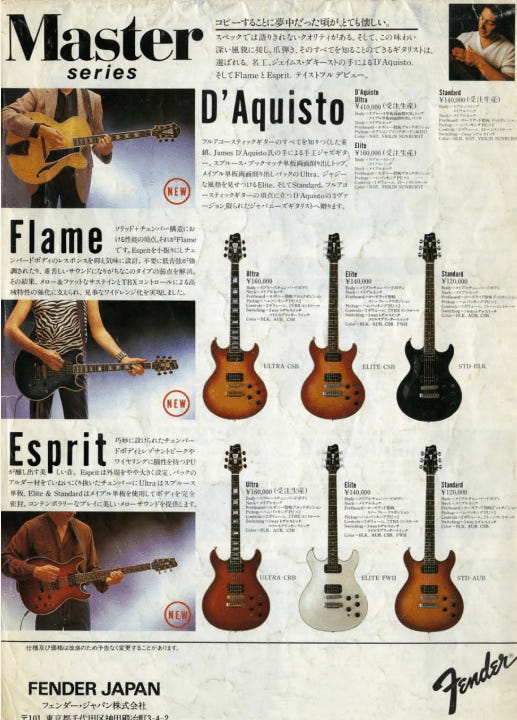Guitar Gavel Gear Of The Week with Will Ray - Chibson Non-reverse Firebird
$268 and a Gibson decal.
This one doesn't fit right for Will's picking hand, but you would never know it.
The best part... Let's see what she can do: 2:16
Dan Smith, a man who wore many magical hats at Fender and played a key role resuscitating the company after the CBS years, had some “not so Fender” ideas in the mid 1980s. While not all of his ideas were winners, Dan was a legend and a short list of his accomplishments include:
-
Introducing the Standard Stratocaster in 1981 complete with a pre-CBS smaller headstock, also known as the “Dan Smith Stratocaster (1981-1983)
-
Brought about the first artist signature models
-
Helped implement the American Standard series of strats in 1986
-
Created the Fender Custom Shop in 1987
-
Head of Fender’s R&D department from 1995-2006

When CBS sold Fender to Bill Schultz and a group of investors in early 1985, the deal did not include machinery or the Fullerton, CA factory. Production stopped until the end of the year and nearly all guitars in 1985 were made in Japan. This had the new Fender management team scrambling, and on top of it all the consumer's guitar tastes in the mid 1980s were changing. Dealers were anxious for a more aggressive Fender guitar that rivaled the likes of Jackson, BC Rich, and Charvel.
Throwing Darts
This forced Dan Smith into thinking outside of the traditional Fender box and helped bring a number of “not so Fender” guitars to the market, two of which were the totally 80s Katana and Performer.
Smith also introduced the Master Series of guitars in 1984, while these were much more conservative compared to the latter, they were still nontraditional Fenders.
There were three guitars in the Masters Series line-up: the Espirit, Flame and a curious archtop designed by Jimmy D’Aquisto, simply called the D’Aquisto. Each model had three versions, the Standard, Elite, and Ultra (good, better, and best respectively). Both the Espirit and Flame were set-neck double cutaways, the Espirit was semi-hollow while the Flame was a solidbody. Robben Ford’s signature guitar from 1987 was essentially an Espirit.
Clearly, Smith was going out on a limb and presenting some other menu options to Gibson’s Les Paul and hollow body players. Why not a jazz box? Fender had nothing to lose, and remember at this point in time they weren’t even manufacturing in the U.S. So Fender goes all in and builds a relationship with Jimmy D’Aquisto.
Jimmy was the apprentice and successor to John D’Angelico, having began his tenure at D’Angelico’s shop when he was 17. After John died in 1964 at the early age of 59, Jimmy bought the shop and his designs. However, the D’Angelico brand name was tied-up in an attorney's office and remained in obscurity until recent history.
Both D’Angelico and D’Aquisto are regarded as two of the world’s best archtop builders.
By partnering with Jimmy, Fender was taking a clear shot at Gibson, even going as far as creating an “extended open book” headstock design for these guitars.
None of the Master Series were super successful, but the D’Aquisto had the best run of the bunch. The initial batch was made in Japan and only offered for one year, but Fender released the D’Aquisto Elite again from 1989-1994, also made in Japan.
Fender’s custom shop then took over production of the Ultra and Elite in 1994. Though he had never built an archtop before, Fender’s newly hired Master Builder Stephen Stern took the lead and was trained-up by Jimmy D’Aquisto for approximately one year.
Jimmy passed away in 1995 at age 59, the same age as his mentor John D’Angelico.
Fender’s custom shop ended the Ultra in 2000 and the Elite in 2002. Current prices for the D’Aquisto’s range from a couple of thousand dollars for a MIJ Standard, to five-digit sums for a Custom Shop Ultra.







